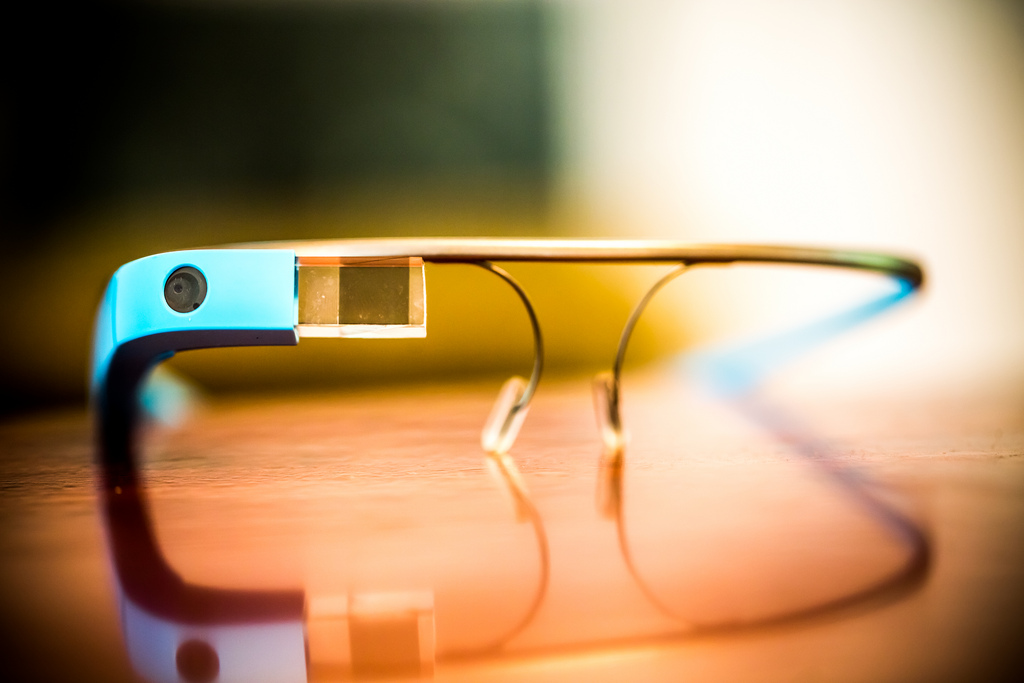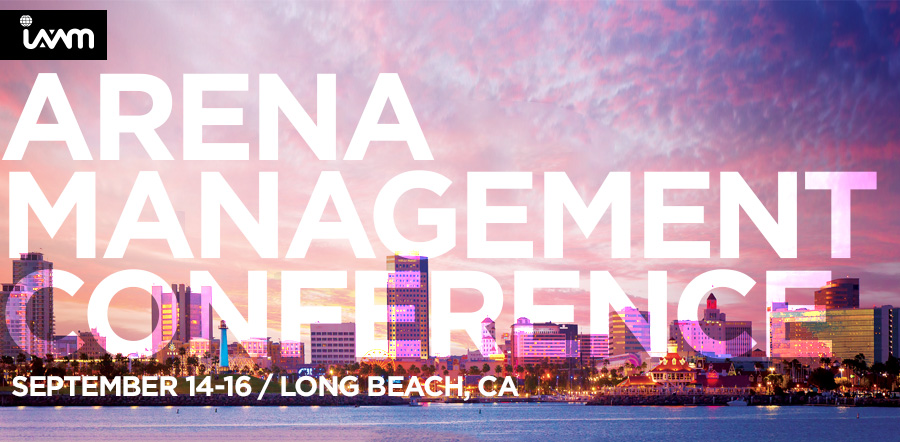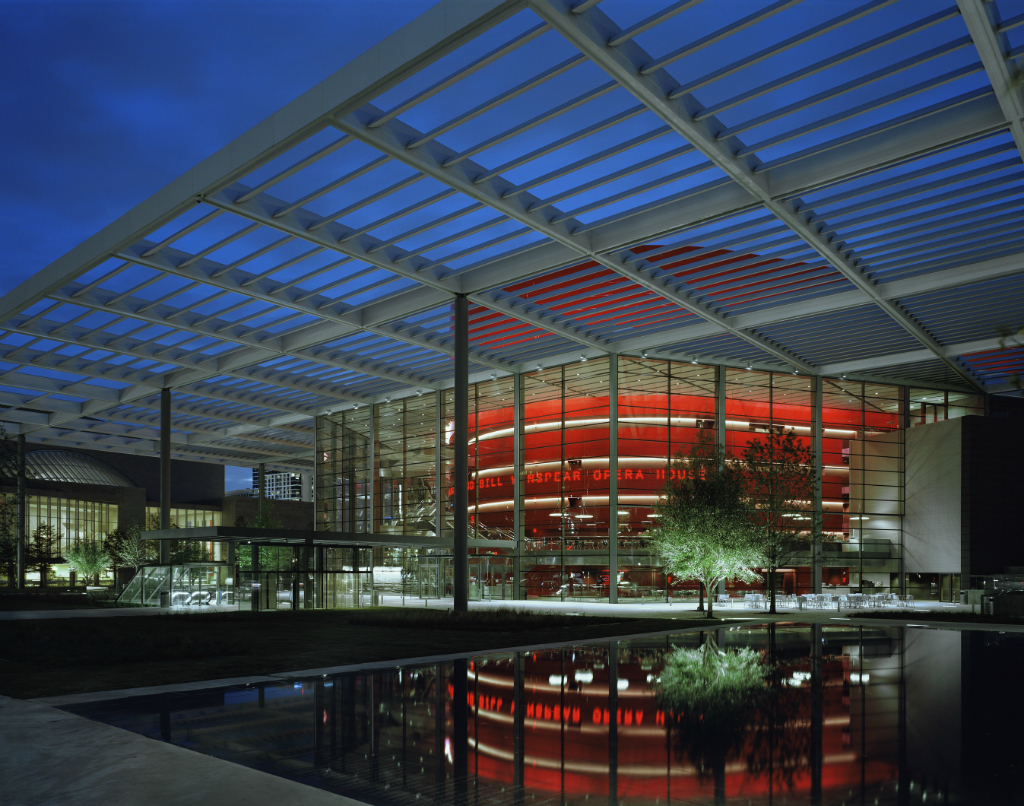Five Legal Considerations Before Using Google Glass
Two of our member venues have received Google Glass to experiment with in order to learn about the pros and cons of the technology when using it in a facility. We’ll be following their progress on the blog here and in FM magazine. The first blog post from the AT& T Performing Arts Center appeared this summer. This second blog post is written by Robyn Williams, CFE, executive director of Portland’5 Centers for the Arts.
Portland’5 was very excited to be selected as one of the venues to tryout Google Glass. It came up in a town hall at the last Performing Arts Manager’s Conference as to how we would handle a patron entering the building wearing one. It was clear that most of us didn’t know much about this technology.
We immediately brainstormed a variety of cool things we’d love to do with it: secret shopping, filming the “second experience,” etc., but it became clear that the first order of business was a chat with our attorney, Nathan. Here were some of his comments:
1. Photo and Video Recording – Google Glass users can discretely record photo and video. This results in countless privacy concerns from voyeurism to surveillance of privileged information. For example, a Google Glass user could snap photos of sensitive or confidential documents. Or, an employee could secretly record a private staff meeting. Some bars and restaurants have already banned Google Glass to protect the privacy of their patrons.
2. Audio Recording – Under Oregon law, a person may not…”(c) Obtain or attempt to obtain the whole or any part of a conversation by means of any device, contrivance, machine or apparatus, whether electrical, mechanical, manual or otherwise, if not all participants in the conversation are specifically informed that their conversation is being obtained.”
So recording with Google Glass of a conversation without the other person or people’s consent might be a crime.
3. Facial Recognition – Google claims to be taking measures to prevent this, but some believe that facial-recognition apps will be available that can use a smartphone data connection to identify people observed by Google Glass. This may not be illegal yet, but could be as states introduce legislation to regulate “wearable computers.”
4. Recording Phone Calls – The glasses also have the capability to record phone calls received through the device. This could lead to violation of state wiretapping laws.
5. Copyright/Intellectual Property Issues – The use of Google Glass at a venue could lead to copyright infringement claims arising from patrons recording audio or video at concerts that do not allow recording or photography. This is an issue with any smart phone but may be much harder to police through the use of Google Glass.
Here’s a great article on the topic of Google Glass and the law.
OK, secret shopping is out. We decided to take some time to really learn how it works and go from there. We handed it off to Joe Durr, director of event services, to see what he could discover. Stay tuned.
(photo credit: Thomas Hawk via photopin cc)
AMC14: Creating the Friction-Free Experience
A superb guest experience is the heart of every venue manager’s strategy, because ultimately, without guests, there’s no business. So it isn’t surprising that two morning sessions at the 2014 Arena Management Conference focused on the guest experience. Specifically, both sessions touched on how to create a friction-free environment.
“Patrons are becoming more sophisticated,” said Martin Thorson, vice president of sports, entertainment, convention, and gaming for Sodexo Leisure, during the“The Premium Amenity: Upgrading Your Fan’s Experience” session. “Their expectations and knowledge have advanced, and the bar has been raised to the highest level.”
It’s true, and premium amenities are continually being redefined by cultural and economic drivers. One of those drivers is ease-of-use.
“There needs to be a focus on a friction-free experience,” said Dave Brown, executive vice president and general manager of the American Airlines Center in Dallas, Texas. “There is so much competition for leisure time.”
Brown said that many of the reasons people don’t attend events is because of traffic, venue access, concession lines, etc.
“Premium guests demand the most seamless experience,” Brown said. “Consider focusing on driveway-to-driveway experience.”
One way to do that is to concentrate on mobile technology.
“We need to level set what is real and what hits the road and how that affects guest experience from A to Z,” said Dennis Scanlon, vice president of sales for Etix, during the “Mobile Technology: Enhancing Profitability and Customer Engagement” session.
Scanlon observed that most of the AMC attendees were aged 40-plus.
“But the market segment that impacts us the most is 24-34,” he said. “That is who this technology is geared for.”
Attendees expect more, Scanlon said. They want interactivity from the point they meet you to the point they leave.
One example of how to interact with fans was provided by Jim Cheshire, platform director for AVAI Mobile Solutions. He said that at one rodeo in Houston fans were able to enter their own scores and compare them with the judges. Random prizes were offered for the closest scores.
It’s not just in-house where engagement happens. The average ticket transaction is 3.5 tickets. That means one person is buying tickets for at least three people.
“For all that we have available to us, 66 percent of the audience is never touched,” Scanlon said. “New technology is allowing us to get data from that group to create a one-to-one interaction. The challenge is: how can you help me get to know the other two people in that group?”
In fact, he said, there is no other business with that much growth opportunity. If you can facilitate a friction-free experience, then you’ll reap marketing and financial benefits.
“The easier it is for people to spend money in your venue, the more they’ll spend,” said Jim Wynkoop, general manager of Global Spectrum/Chaifetz Arena – St. Louis University.
AMC14: Brand Strategy and Leadership for Venues
Welcome Long Beach, California, home to the 2014 Arena Management Conference (AMC), which began on a high note with a discussion about brand strategy.
 “Creating brand allegiance or brand loyalty is the most important challenge you face,” said Greg Economou, executive vice president for Guggenheim Media and dick clark productions, during his opening session, “How and Why Venues Need to Think About Brand Strategy, Brand Management, and Brand Leadership.”
“Creating brand allegiance or brand loyalty is the most important challenge you face,” said Greg Economou, executive vice president for Guggenheim Media and dick clark productions, during his opening session, “How and Why Venues Need to Think About Brand Strategy, Brand Management, and Brand Leadership.”
Economou encouraged AMC attendees to become experts in brand management.
“Your venue is the front porch for your core tenant brands,” he said. “Brand helps drive value, which brings in money.”
Using his experience at venues, such as Madison Square Garden, Economou inspired attendees by telling them that besides their regular job titles (e.g., general manager, director, etc.), the title “brand leader” should be included, as well.
“Branding is a promise of your persona,” he said. “The words you use to describe it are more important than the images that depict it. Ask yourself: What’s your mission, position, and vision? Live the positioning everyday in every way. It’s the most important thing that you can do.”
Industry News Weekly Roundup
There was a lot of news this past week. Here are some stories that caught our eyes.
Why Major League Baseball Got Into…the Wine Business?
—Fast Company
“This season, seven teams–the Giants, Yankees, Mariners, Red Sox, Rangers, Phillies, and Cubs–became the first to hawk custom blends.”
Music Festival Travel Site Festicket Raises $2.7M
—Billboard
“The fast-growing startup gives music fans a way to discover and book complete travel packages — tickets, transportation and hotel — for festivals around the globe. Festicket works with over 200 festivals, including Tomorrowland, Leeds and Reading, and puts its membership at over 300,000.”
Ticketmaster Acquires Eventjoy
—Encore
“Eventjoy offers event organizers a system to to self-manage their events and ticketing, with resources such as social marketing, analytics, and customer engagement tools and can stay connected with attendees through tools like embedded direct messaging and real time notifications. All of their services are available through a mobile application so that event management can be handled from a mobile device.”
An Economic Giant: SXSW’s Impact on Austin Blows Past $300M Mark
—Austin Business Journal
“That number reflects the money festival attendees and participating brands spend on registration, food, lodging and other expenses during the 10-day event.”
Triple-A Toledo Mudhens Turned Their Outfield Into a Mini-Golf Course
—Sports Illustrated
“The course winds its way through the outfield before heading towards the basepaths, with one hole finishing on top of the pitcher’s mound.”
(Image: Fast Company/Major League Baseball)
The Extraordinary Value of Venue Group Membership
IAVM introduced its Venue Group Membership program this summer. The program delivers an affordable discount pricing structure that enables venues to sign up to 20 employees who are involved in venue management. Since its debut, several venues have joined the program, including the AT&T Performing Arts Center in Dallas, Texas, which was the first venue to sign up for it.
“We believe IAVM memberships provide extraordinary value for team members in their personal and work lives,” said Russell Read, CFE, vice president of operations for the AT&T Performing Arts Center. “Ideally, we would like for all our team members to hold memberships, but budgets constraints always played a factor. This new program now allows us to bring more people into the fold and reap the benefits that IAVM offers.”
Read said that nothing is more important than the relationships that are found and strengthen through IAVM.
“It is through our fellow venue managers we find education, mentorship, collaboration, and support,” he said. “All employees, no matter what stage they are in within our company or industry, benefit from being plugged into a community of their peers. The more input you have the more output you get. That output, of course, translates to new opinions, increased participation in the association’s development programs, and a robust pipeline of new venue managers who will inevitably be our next industry leaders.”
The San Diego Convention Center is also a member of the new program.
“At the San Diego Convention Center Corporation, we take great pride in our staff as they are our greatest asset,” said Carol Wallace, president and CEO of the San Diego Convention Center. “Participation in the IAVM group membership program is a great way for us to afford our employees the opportunity to grow as professionals via training and insight with the industry’s leading venue managers.”
Wallace said the group membership program has allowed the corporation to not only bring more of its experienced professionals to the table, but also to identify and introduce its leaders of tomorrow to the industry conversation in the early stages of their professional development.
“IAVM is made strong by the knowledgeable and accomplished membership they maintain,” Wallace said. “The insight each member brings to the association from their corner of the industry is of great value. The environment of mentorship and collaboration allows leaders to better understand and address issues relating to the public assembly venues management industry. By increasing the participation of our leading professionals, the IAVM group membership program can only benefit the industry as a whole.”
The current venues officially participating in the program are the AT&T Performing Arts Center, the San Diego Convention Center, the Swiftel Center (Brookings, South Dakota), the MassMutual Center (Springfield, Massachusetts), and the Chaifetz Arena (St. Louis, Missouri).
“We are excited about the increased engagement opportunities that this new membership model affords. Our network will grow significantly and our expertise will broaden as a result. More collaboration from members with a wider scope of perspectives will make the industry and IAVM stronger,” said Gina Brydson, IAVM’s director of membership. “Member venues supporting this program means more mid-level managers and young professionals will be brought into the fold, which sets the tone to nurture the future leaders of our wonderful association. Group Membership will assist our members in training their staff more affordably while weaving them into attending schools and conferences on an annual basis, again at discount pricing. These new members will increase their participation, learn important skill sets, and build lifelong relationships with their peers and our Allied Partners, which helps them achieve their goals, too. Our Allied Partners want a bigger network—individuals that either have purchasing power or influence the sale. This is a win for everyone in our industry.”
Please read “Introducing IAVM’s Venue Group Membership Program” for more information, and if you have questions or you’re ready to sign up, please call IAVM Member Services at 972.906.7441 or membership@iavm.org.
(Image: Tim Hursley/AT&T Performing Arts Center)
Do you want to receive a Front Row News weekly digest?
Categories
- Allied (861)
- Architecture (147)
- Arenas (747)
- Career (897)
- Convention Centers (895)
- Education (623)
- Events (1,544)
- Food & Beverage (193)
- Foundation (113)
- Guest Experience (1,496)
- Industry News (2,270)
- Leadership (1,888)
- Marketing (150)
- Membership (2,000)
- Music (213)
- Performing Arts Centers (454)
- Professional Development (409)
- Research (127)
- Safety & Security (442)
- Sports (763)
- Stadiums (608)
- Student (159)
- Technology (516)
- Ticketing (92)
- Touring (82)
- Trends (364)
- Uncategorized (743)
- Universities (218)
- Video (25)
- Young Professional (198)
Twitter Feed
- Twitter feed loading
Recent Posts
- Venuworks and ATG Entertainment Selected to Manage Fresno Convention and Entertainment Center
- Seattle Convention Center Announces Strategic Leadership Appointment and Growth Initiatives for 2026
- Peggy Daidakis Humbly Made Convention Center History
- Welcome to Our Newest Members
- New Member Benefit! IAVM Partners with Advantage Training to Elevate Staff Readiness and Guest Experience
Categories
- Allied
- Architecture
- Arenas
- Career
- Convention Centers
- Education
- Events
- Food & Beverage
- Foundation
- Guest Experience
- Industry News
- Leadership
- Marketing
- Membership
- Music
- Performing Arts Centers
- Professional Development
- Research
- Safety & Security
- Sports
- Stadiums
- Student
- Technology
- Ticketing
- Touring
- Trends
- Uncategorized
- Universities
- Video
- Young Professional
Archives
- December 2025
- November 2025
- October 2025
- September 2025
- August 2025
- July 2025
- June 2025
- May 2025
- April 2025
- March 2025
- February 2025
- January 2025
- December 2024
- November 2024
- October 2024
- September 2024
- August 2024
- July 2024
- June 2024
- May 2024
- April 2024
- March 2024
- February 2024
- January 2024
- December 2023
- November 2023
- October 2023
- September 2023
- August 2023
- July 2023
- June 2023
- May 2023
- April 2023
- March 2023
- February 2023
- January 2023
- December 2022
- November 2022
- October 2022
- September 2022
- August 2022
- July 2022
- June 2022
- May 2022
- April 2022
- March 2022
- February 2022
- January 2022
- December 2021
- November 2021
- October 2021
- September 2021
- August 2021
- July 2021
- June 2021
- May 2021
- April 2021
- March 2021
- February 2021
- January 2021
- December 2020
- November 2020
- October 2020
- September 2020
- August 2020
- July 2020
- June 2020
- May 2020
- April 2020
- March 2020
- February 2020
- January 2020
- December 2019
- November 2019
- October 2019
- September 2019
- August 2019
- July 2019
- June 2019
- May 2019
- April 2019
- March 2019
- February 2019
- January 2019
- December 2018
- November 2018
- October 2018
- September 2018
- August 2018
- July 2018
- June 2018
- May 2018
- April 2018
- March 2018
- February 2018
- January 2018
- December 2017
- November 2017
- October 2017
- September 2017
- August 2017
- July 2017
- June 2017
- May 2017
- April 2017
- March 2017
- February 2017
- January 2017
- December 2016
- November 2016
- October 2016
- September 2016
- August 2016
- July 2016
- June 2016
- May 2016
- April 2016
- March 2016
- February 2016
- January 2016
- December 2015
- November 2015
- October 2015
- September 2015
- August 2015
- July 2015
- June 2015
- May 2015
- April 2015
- March 2015
- February 2015
- January 2015
- December 2014
- November 2014
- October 2014
- September 2014
- August 2014
- July 2014
- June 2014
- May 2014
- April 2014
- March 2014
- February 2014
- January 2014
- December 2013
- November 2013
- October 2013
- September 2013
- August 2013
- July 2013
- June 2013
- May 2013
- April 2013
- March 2013
- February 2013
- January 2013
- May 2012
- March 2012
- December 2011
- November 2011
- October 2011
Recent Comments
- Frank Bradshaw, Ph.D., CVE on John Meyer, CVE, a Tireless Advocate of Certification for Venue Professionals, Has Died
- Neil Sulkes on Hilary Hartung, Friend to Many in Venue Marketing, Has Left Us
- Jason Parker, CVE on The Devastation of Hurricane Helene and How We Can Support One Another
- Larry Perkins on Touhey Testifies Against Speculative Ticketing Before Congressional Subcommittee
- Peter Secord on Major Players for Planned Elkhart Amphitheater Were in the Mix at VenueConnect




